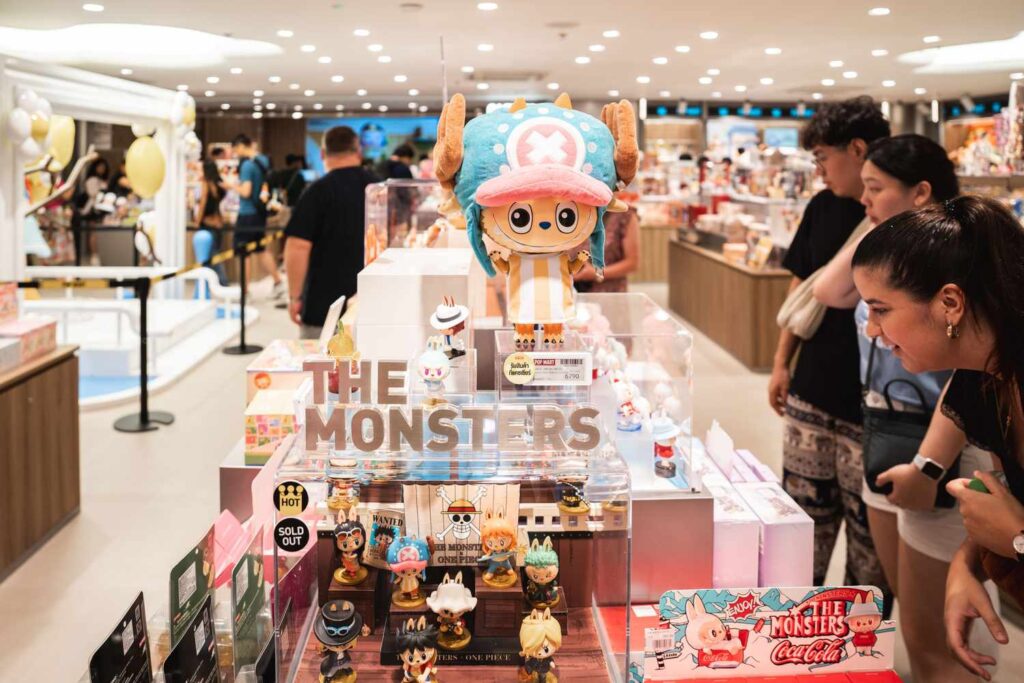Key Takeaways
- Adults are a growing audience for toy and game companies, which are catering to them with products that nod to popular movies and bands from the ’80s and ’90s.
- Social media and packaging that masks which version of a product a shopper is buying have fueled the phenomen, as have hot markets.
Do you remember the good old days? Game and toy makers are counting on it.
Companies are embracing their adult customers, announcing releases that evoke nostalgia for cultural touchstones of the ’80s and ’90s. Nintendo is reviving games designed for the tabletop Virtual Boy console. Lego is releasing a set inspired by the 1985 movie “The Goonies.” And Mattel (MAT) captured the “Home Alone” movie series and Backstreet Boys band in figurine sets.
Older generations—from college students attaching Labubu dolls to their backpacks to grandfathers putting model cars on display—are fueling the industry’s growth, with many funding their spending with gains from hot markets. Adults spent more money on toys for themselves than any other age group in 2024, according to market research group Circana. Shopping for adults continued to outpace buying for youth in the toy and game category in the first half of 2025, Circana said.
“Pop toys,” such as the small plush Labubu and Wakuku dolls, have gone from “niche items into lifestyle essentials for adults and millennials,” QuantaSing Group (QSG) CEO Peng Li said on a conference call this fall. (Labubu is a big-hearted, magical monster with a toothy grin, while Wakuku is a wild child-like character with round cheeks.)
Consumers “are seeking comfort, identity, a firm affirmation, and connection through their purchases, and pop toys deliver exactly that,” Li said during a June call, according to a transcript made available by AlphaSense. (China-based QuantaSing obtained the property rights to Wakuku through an acquisition announced earlier this year.)
What This Means for Investors
Adults have a range of reasons for buying things like toys, games and collectibles that are typically aimed at children. Some, however, are looking for rare versions that may appreciate in value, often dropping cash they came into as markets have risen. In some cases, that has put new distance between the toy and game segment and its traditional audience.
Adults are often inspired to buy toys by the sense of nostalgia they evoke, according to surveys from consumer insights group CivicScience. But some shoppers are collecting items to join a community of fans or make a financial investment, the survey found.
Retailers and brands are eager to capitalize on a cohort they’ve taken to calling “kidults,” who executives say are ready to spend. Mattel is looking to adults to revive sluggish Barbie sales after older consumers lifted Hot Wheels sales, the company said on an October conference call.
Etsy (ETSY) has a “millennial toy” tag, while Build-a-Bear Workshop (BBW) runs an 18-plus e-commerce platform selling stuffed animals sipping margaritas and a Bloody Mary bear.About 40% of Build-a-Bear business now comes from teens and adults, the company said this spring.
Working with influencers and building a social media following helped Build-a-Bear reach “the growing kidult market, who often tend to be higher-value collectors, gift givers and viral product purchasers,” CEO Sharon Price John said this summer.
Labubu also came to prominence through the social media circuit. Shoppers don’t know which Labubu model they have bought until they remove its packaging, which can compel people to keep buying until they unwrap what they want. So-called “blind box” packaging has contributed to the rise of other viral items, such as Sonny Angel figurines and Pokémon cards.
Pokémon sales on eBay (EBAY) have increased exponentially in recent quarters, prompting the platform to host live shopping events focused on the trading cards, eBay executives said in October.
The anime cards are so sought-after that Costco Wholesale (COST) CEO Ronald Vachris cited them while explaining why the wholesaler is adding a waiting room to its e-commerce platform.
Waiting rooms for “high-velocity items, such as Pokémon cards” can “reduce the traffic from bots, increase the opportunity for members to purchase high-demand items, while improving the speed and the stability of the site during peak traffic periods,” Vachris said on a conference call this fall, according to a transcript.
Rising stock markets that have some investors flush with cash are likely fueling the popularity of some adult splurges. “Everything speculative is up right now: The stock market. Bitcoin. Trading cards,” said Jason Masherah, president of trading card company Upper Deck in a recent LinkedIn post. “It’s pricing some collectors out.”
